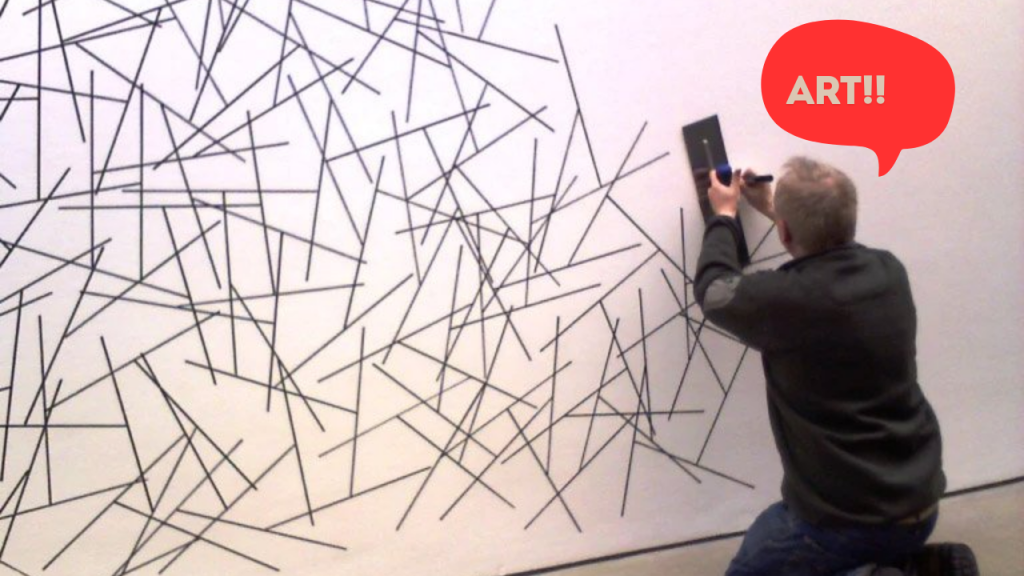How many times have you found yourself in a state of bewilderment while gazing at a piece of artwork asking yourself why is it even here? It’s just a pile of rubbles or a shoe attached to metal strings. How would you even consider it as art? It doesn’t look like art.
Well, what is art? The question is as open-ended as asking what is life or what is happiness for instance. Art as an idea or a concept is something suggested by Sol LeWitt. The definition of art has conventionally and continues to be torn between conventional depictions and avant-garde creation. Strong among the voices involved in this dispute is that of Sol LeWitt, who is considered one of the founders of conceptual art. Born on September 9, 1928, the work of LeWitt challenges traditional notions of art through very serious questions regarding its essence and objective.
The contribution that Sol LeWitt made to art rests in his conviction that an artwork’s concept or idea is more important than the finished piece itself. This can be learned from his fundamentally critical writings, especially in his “Paragraphs on Conceptual Art” of 1967, wherein he says, “the idea becomes a machine that makes the art.” Valuing an artwork in terms of its physicality but in the idea it embodies is what LeWitt had to say on this. This paradigm shift moved the emphasis of art beyond aesthetic and material consideration to concentrate on intellectual engagement. LeWitt’s practice is characterized by a systemized structure; many of his works deal with geometrical forms, permutations, and abstract configurations. For instance, his wall drawings represent instructions given and, in that respect, can be executed by others according to the specification he has set forward. This, in return, underlines his notion of the artist providing the concept and the execution being secondary.
LeWitt’s art often puzzles the audience or leaves it skeptical because so many are used to seeing it performed more traditionally. The works of “Incomplete Open Cubes” or “Wall Drawings” may be viewed as being too ascetic or even frivolous compared to classical masterpieces. Nevertheless, LeWitt’s oeuvre is a really radical digression from traditional aesthetic approaches that expand the borders of what could have been treated as a work of art. For LeWitt, prioritizing the idea over the execution plays upon another disposition: that art should be aesthetically appealing or at a minimum skillfully executed. Reactions to LeWitt’s work often depend upon viewer expectations. If one comes to art from the perspective of its visual or emotional resonance, they’re apt to get upset at the plainness or intellectualism of his works. On the other hand, in LeWitt’s work, the viewer is invited to engage what lies beneath as an idea and not stop at superficial reaction. Such a shift in emphasis invites profound reflections on how art reflects and shapes intellectual and cultural discourse. Through LeWitt’s influences, which spread beyond the confines of his works to more general currents in the modern arts, his ideas were crucial to the setting up of the artistic movement Conceptual Art. The latter prized concept and idea over aesthetic or material concerns. As a style, Conceptual Art created a revolution in the ways art would subsequently be made, curated, and interpreted.
This structure has, moreover, taken LeWitt into the development of a practice that allows other artists in the future to investigate the interrelationship between concept and form. The emphasis on instructions and reproducibility informs work from performance art to digital media. What’s more, in showing that art can be specified and realised through intellectual structures, LeWitt opens up new modes of creative expression and critical insight.
These ideas by LeWitt raise important conceptual questions about the nature of art. If art is an idea, then the borders between art and non-art become fluid. Another ramification of this thought challenges traditional hierarchies and invokes the possibility of reconsidering what constitutes artistic value. As such, it hints at the idea that art can be found in myriad forms and contexts well beyond traditional media and methods. The conceptual approach further permits the onlooker to reflect upon their own agency and position concerning the making and interpretation of art. In fact, LeWitt’s works invite an active engagement with the conceptual dimensions of art rather than the passive act of its consumption. This shift would promote a more participatory, reflectively engaging art and one in which meaning is co-created between artist and audience.

Iftikar Ahmed is a New Delhi-based art writer & researcher.





